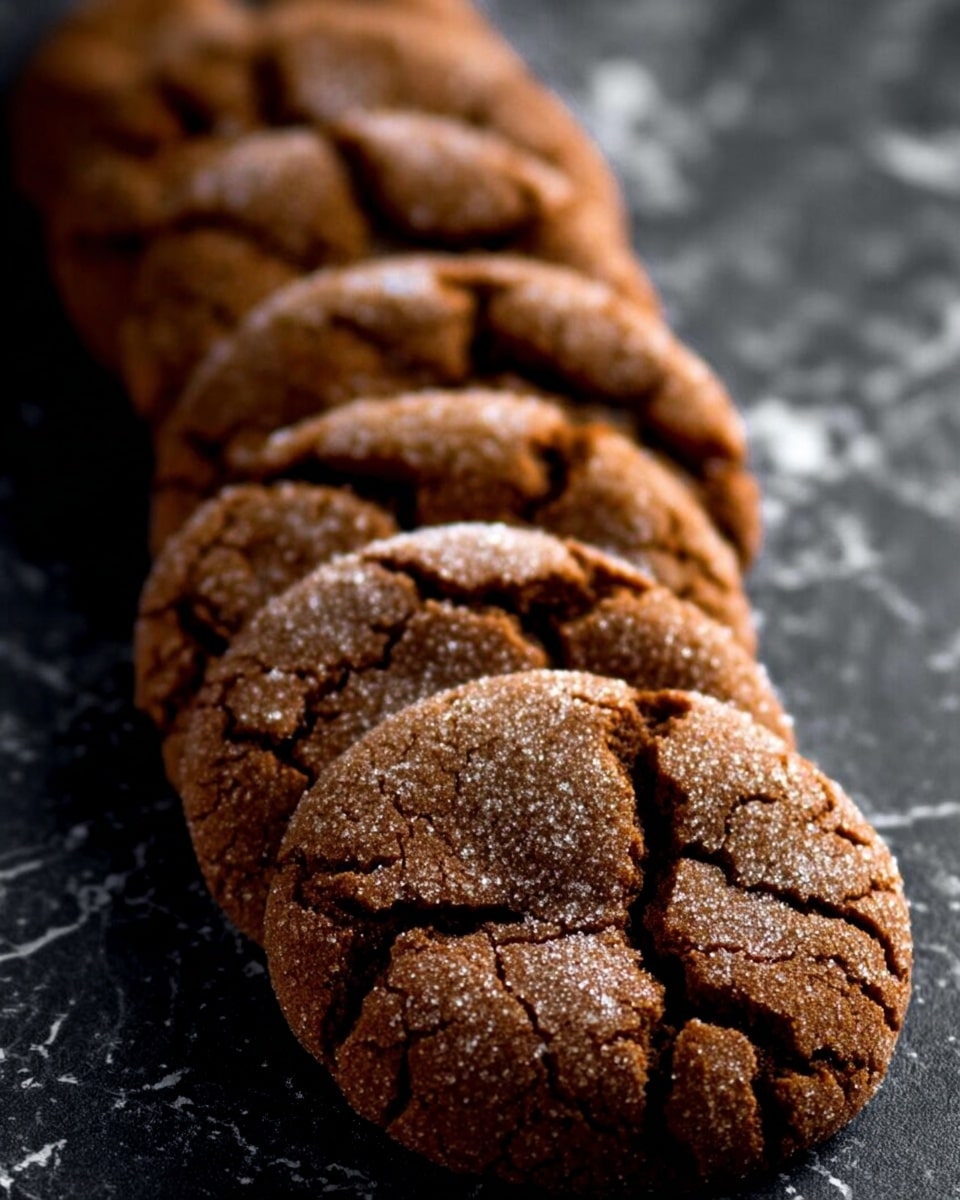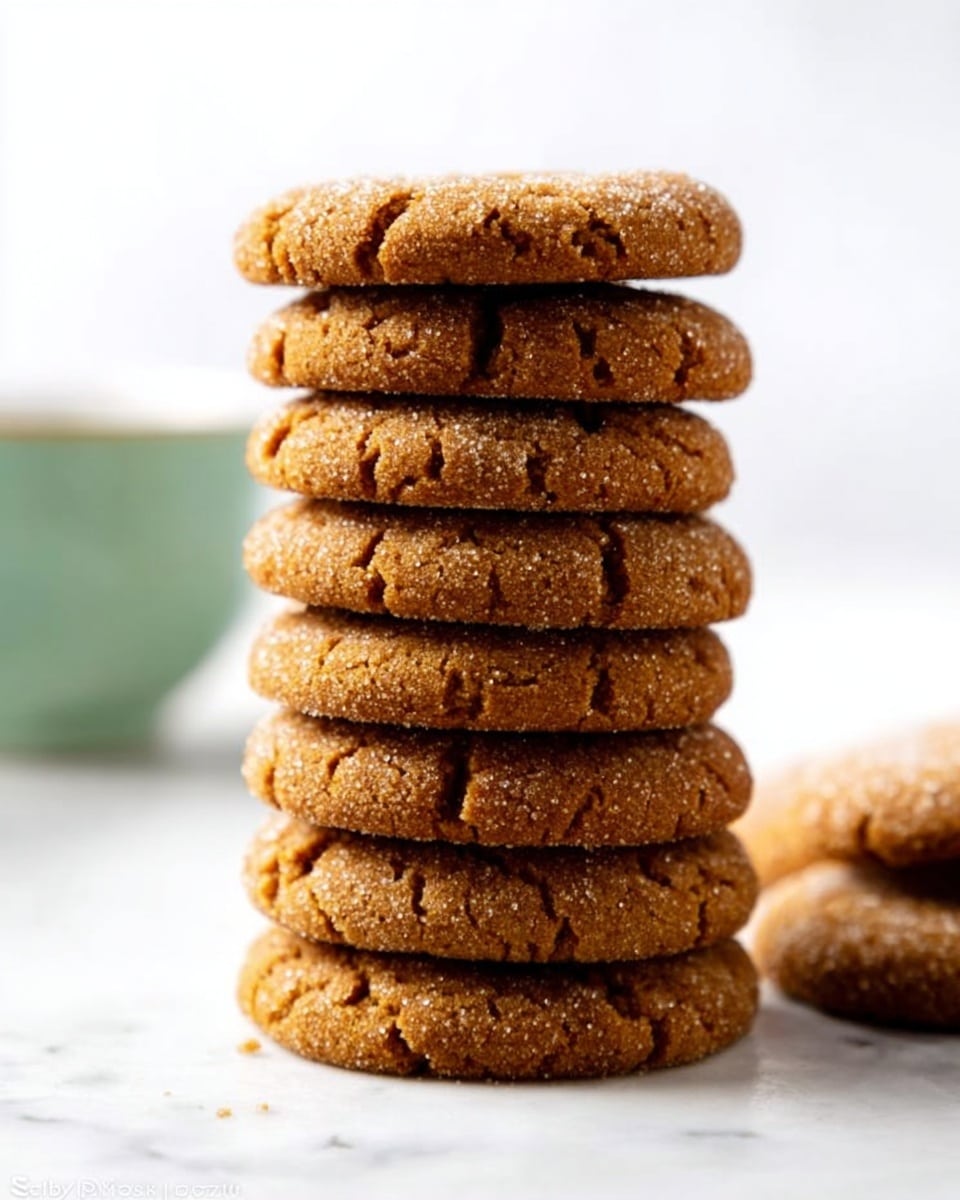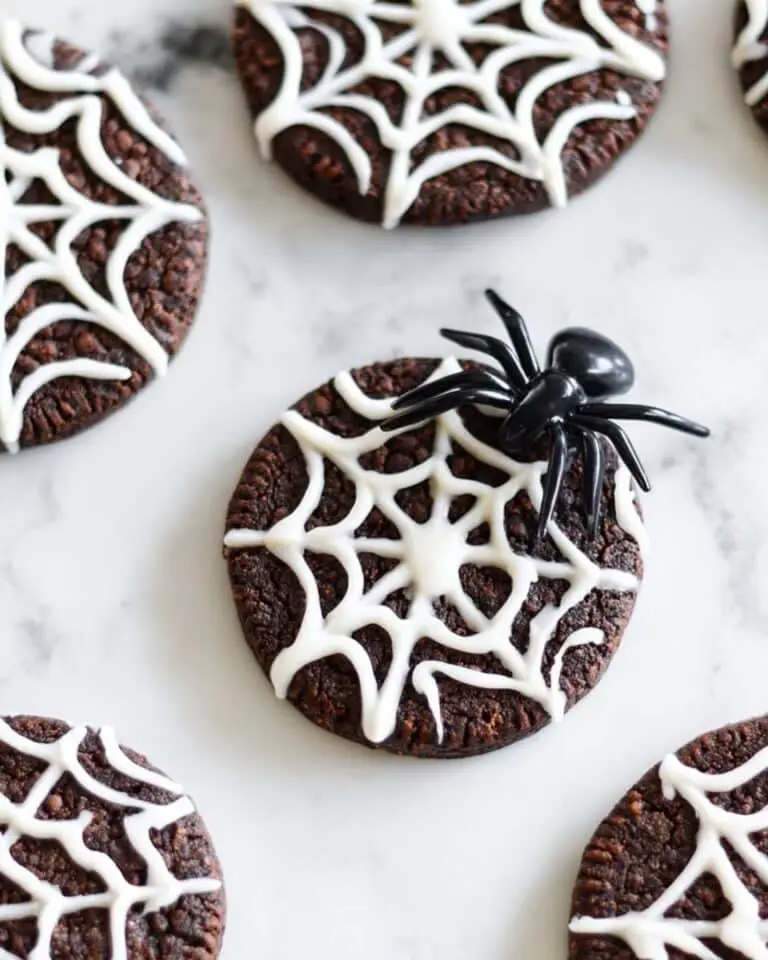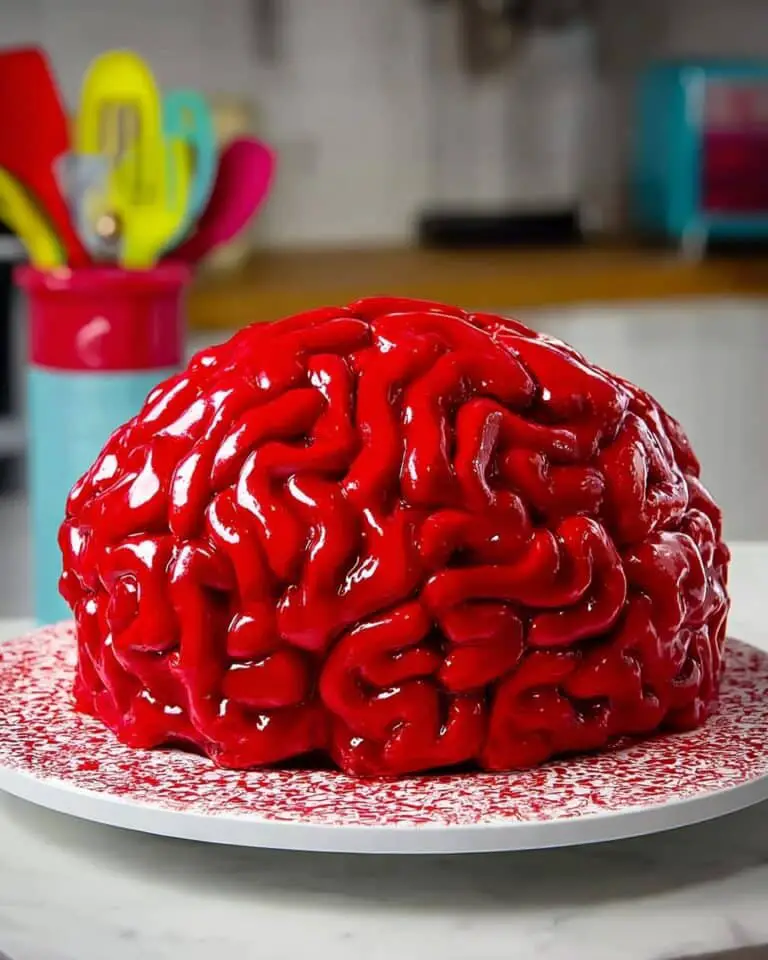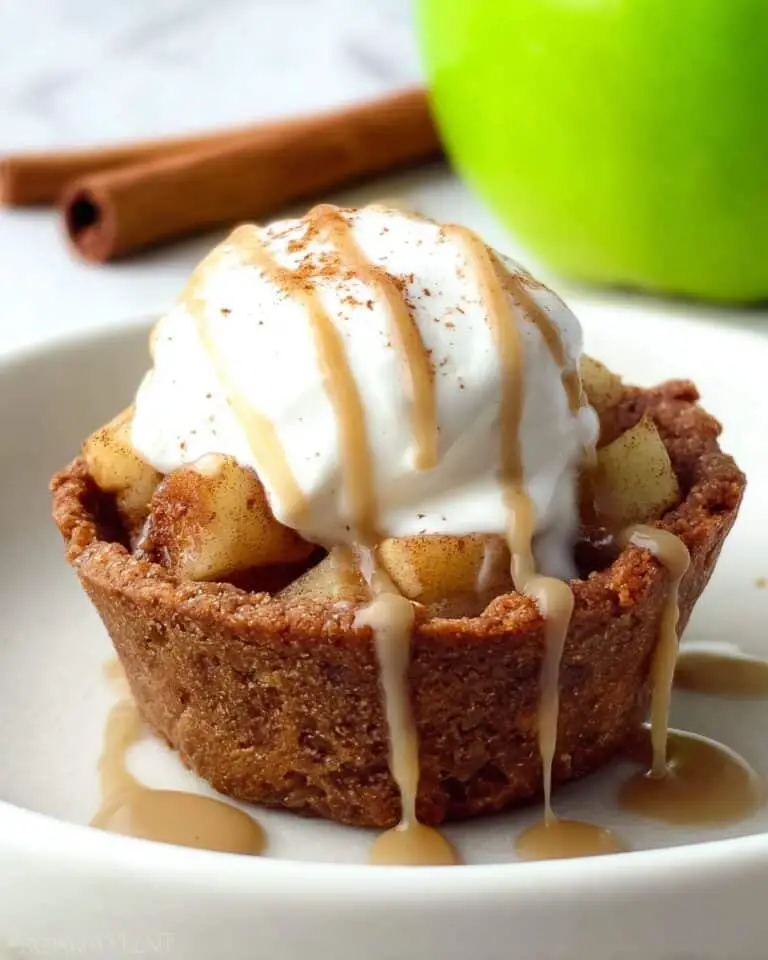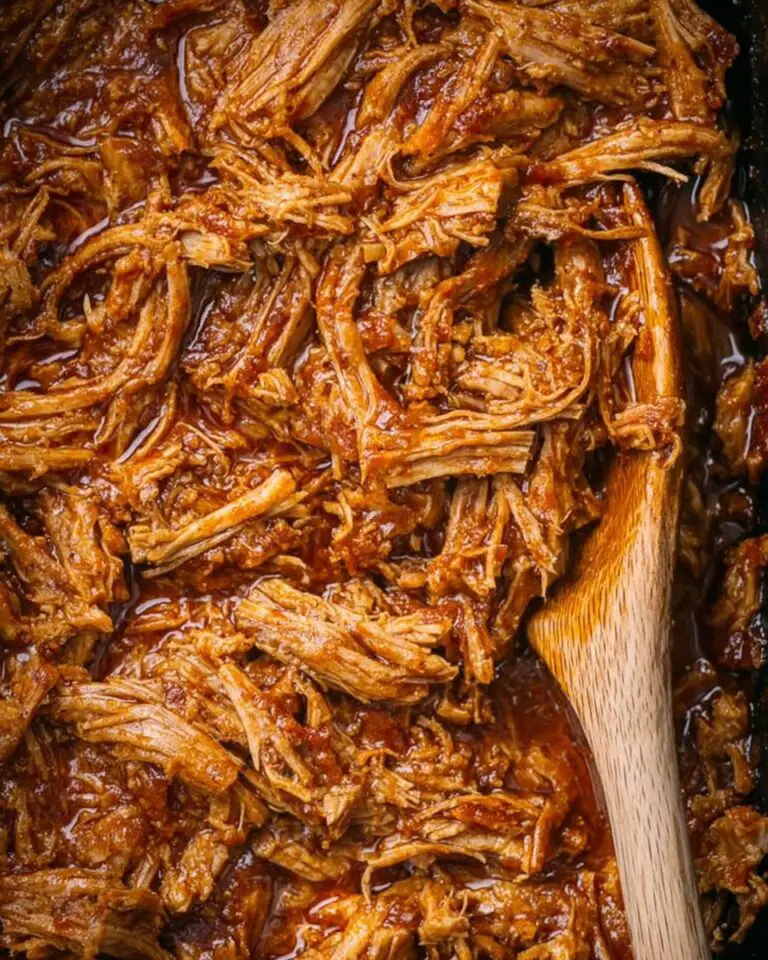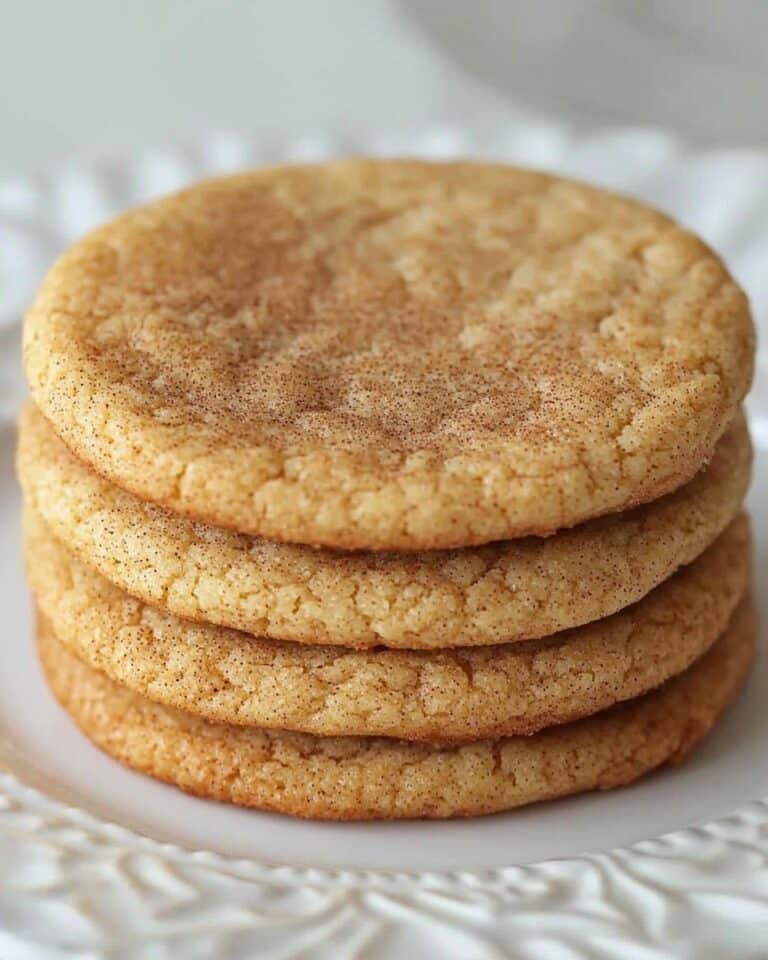If you’re someone who loves the warm, spicy notes of molasses combined with a tender, buttery cookie, then you’re going to absolutely adore Rose Levy Beranbaum’s Molasses Sugar Butter Cookies Recipe. I stumbled upon this recipe when I was craving something a little different from your typical sugar cookie, and it quickly became a favorite in my household. The blend of spices like cinnamon, ginger, and cloves, paired with clarified browned butter, gives these cookies a depth of flavor that feels both nostalgic and elegantly refined.
Whether you’re making these cookies for a cozy tea afternoon or as charming gifts during the holidays, this recipe shines with its crisp edges and soft, chewy center. What makes Rose Levy Beranbaum’s Molasses Sugar Butter Cookies Recipe so special is not just the flavor, but the technique—clarifying and browning the butter—that really elevates the texture and taste, something I didn’t appreciate until I tried her method myself. Stick with me here and I’ll guide you through every step for the best results.
Why You’ll Love This Recipe
- Deep, nuanced flavor: The browned butter and warm spices create a complex, cozy taste that’s not your average cookie.
- Perfect texture balance: Crispy on the outside while staying delightfully chewy in the center — the kind of cookie texture everyone fights over.
- Reliable technique: Rose Levy Beranbaum’s precise method ensures your cookies come out beautifully every single time.
- Great for sharing or gifting: These cookies hold up well and keep their softness, making them perfect to pack up or serve at gatherings.
Ingredients You’ll Need
Every ingredient in Rose Levy Beranbaum’s Molasses Sugar Butter Cookies Recipe has a purpose, from the spices to the sugar type, creating a harmonious blend that bakes up just right. I recommend using fresh spices and superfine sugar if you can to get that perfect crunchy exterior.
- Unsalted butter: Browning the butter adds a nutty, rich flavor that’s essential here, so use good-quality butter for best results.
- Egg: Using just part of a large egg keeps the texture perfect — too much would make the dough too wet.
- Bleached all-purpose flour: Lightly spooned into the cup and leveled off to ensure accuracy, this gives the dough the right structure.
- Baking soda: A little leavening goes a long way, helping the cookies rise and crack beautifully.
- Fine sea salt: Enhances all the flavors – don’t skip it!
- Ground cinnamon, cloves, and ginger: This trio of spices provides the iconic warm molasses cookie flavor.
- Superfine sugar: Used both in the dough and for rolling, it creates that delicate crunch and sparkle on top.
- Light molasses: I love Grandma’s brand for this recipe — it offers a mild, balanced molasses flavor that isn’t overpowering.
Variations
I often like to tweak Rose Levy Beranbaum’s Molasses Sugar Butter Cookies Recipe depending on the season or who I’m baking for. Customizing these cookies is easy and fun — plus it helps you make the recipe your own.
- Add-ins: Sometimes, I stir in chopped crystallized ginger or a handful of chopped pecans for an extra zing and crunch — it brings a lovely texture twist.
- Spice adjustments: If you like it spicier, bump up the ginger and cloves slightly; for a milder cookie, cut them back a bit.
- Sugar swap: For a sparkling finish, turbinado sugar works beautifully when rolling the dough balls, adding extra texture and shine.
- Dietary modifications: If you want to make these dairy-free, try substituting the butter with a high-quality vegan butter and adjusting as needed, though I haven’t personally tried that yet.
How to Make Rose Levy Beranbaum’s Molasses Sugar Butter Cookies Recipe
Step 1: Clarify and Brown the Butter Like a Pro
This step truly sets this cookie apart. Melt your butter slowly on very low heat, stirring often so the milk solids brown gently without burning. It’s tempting to rush, but patience here yields a rich nutty flavor that deepens the cookie’s profile. Pour the browned butter and milk solids into a glass measuring cup and let it cool to no more than 80°F (about room temp) before using—it helps the dough come together just right without melting the sugar or activating the baking soda too early.
Step 2: Prep the Egg and Dry Ingredients
Measure out your egg carefully—this recipe calls for a bit less than a full large egg, so I like to weigh mine or measure by volume. Cover it with plastic wrap to keep it fresh while you mix up your dry ingredients. Whisk the flour, baking soda, salt, and spices together in a medium bowl until they’re evenly combined. This way, you won’t get any surprise clumps of spice or uneven rising.
Step 3: Mix the Dough Gently but Thoroughly
Using a stand mixer fitted with the flat beater, blend the cooled browned butter, sugar, molasses, and egg on low speed for one minute. This low-and-slow mixing keeps your dough smooth without overworking it. Next, add the flour mixture gradually; start stirring on low to avoid killer flour clouds in your kitchen, then increase speed just a bit to fully incorporate. When the dough looks uniform, scrape it out onto plastic wrap, divide in half, and chill for an hour. Trust me on this – chilling firms up the dough so it’s easier to roll and prevents cookies from spreading too much in the oven.
Step 4: Shape and Sugar-Coat Your Cookies
Preheat your oven to 375°F with a rack in the middle. While the oven warms, portion your chilled dough using a 1 1/2-inch cookie scoop or a tablespoon. Roll each scoop into a smooth ball between your palms, then roll thoroughly in superfine sugar. This sugary coating creates that trademark sparkling crackled top and a nice crunch. Space your cookies at least 1 1/2 inches apart on the baking sheet to give them room to spread evenly.
Step 5: Bake to Soft-Crisp Perfection
Bake the cookies for 4 minutes, then rotate the baking sheet for even browning. Continue baking for another 4 to 6 minutes — you’ll want to catch them when cracks appear on the surface but the centers still look slightly underbaked. Press gently with your fingertip and the cookie should feel soft in the middle. If baked too long, they become darker and crispy all the way through, which some may prefer, but I like this perfect soft-chewy balance best. Let them cool on the sheet for a few minutes before transferring to a wire rack to finish cooling.
Pro Tips for Making Rose Levy Beranbaum’s Molasses Sugar Butter Cookies Recipe
- Browning Butter Patience: Don’t rush the butter browning; it’s okay if you smell nuts or see those little brown bits—that’s the flavor magic!
- Temperature Counts: Using the browned butter below 80°F is critical; warmer butter keeps the dough too soft and prevents proper cookie cracks.
- Rolling Sugar Choice: Superfine sugar creates the best crunch, but if you want sparkle, turbinado sugar provides that glossy beautiful finish.
- Dough Chilling: Don’t skip the refrigeration — chilled dough holds shape better, yields more uniform cookies, and controls how they spread.
How to Serve Rose Levy Beranbaum’s Molasses Sugar Butter Cookies Recipe
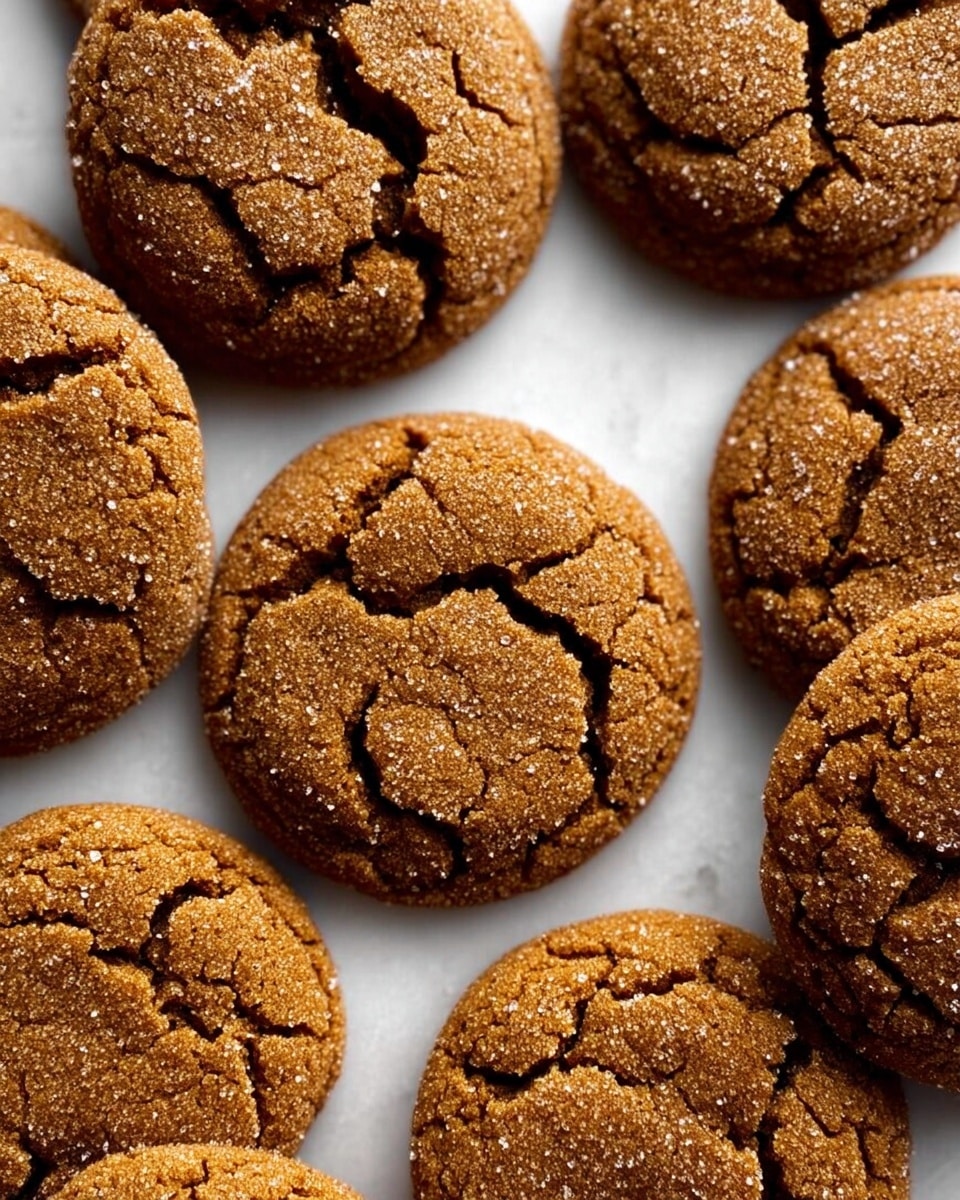
Garnishes
I usually keep it simple with these cookies — the sugar coating is so pretty on its own that I rarely add extra garnishes. But if I’m feeling festive, a light dusting of powdered sugar or a tiny drizzle of white chocolate adds a nice touch. For holidays, a little sprinkle of finely chopped crystallized ginger on top before baking can enhance the flavor beautifully.
Side Dishes
These cookies pair perfectly with a warm cup of chai tea or coffee, especially with a splash of cream. I’ve also served them alongside vanilla bean ice cream for a delightful contrast of warm and cold. If you’re aiming for a cozy afternoon snack, a simple glass of cold milk never fails to complement the molasses and spice.
Creative Ways to Present
For gift-giving, I like stacking a few of these cookies in a small clear box lined with parchment and finishing with a pink ribbon — it looks charming and keeps the cookies snug. Another fun idea I’ve tried is sandwiching two cookies with a thin layer of lemon curd or cream cheese frosting, which adds a zingy counterpoint to the sweetness. For cookie platters, I arrange them around seasonal fruits and nuts to make the whole spread inviting and festive.
Make Ahead and Storage
Storing Leftovers
I keep any leftover cookies in an airtight container at room temperature, and they stay fresh and soft for up to a week. If your kitchen is humid, you might want to store them in the fridge to prevent them from getting sticky, but bring them back to room temperature before serving. From experience, they actually taste best on day two, once the flavors have had a little time to meld.
Freezing
I’ve frozen both the cookie dough and baked cookies. To freeze dough, wrap it tightly in plastic wrap and freeze for up to three months. When you’re ready, thaw overnight in the fridge before shaping and baking. Baked cookies freeze wonderfully too — just layer parchment between them in a freezer-safe container. Thaw at room temperature for a few hours before enjoying.
Reheating
Leftover cookies taste amazing warmed slightly in the oven or microwave. I like 5-7 minutes at 300°F in a preheated oven or 10 seconds in the microwave—just enough to soften the centers again without making the edges tough. This little tip helps bring back that fresh-baked feeling, especially if they’ve been in the fridge.
FAQs
-
Can I use regular sugar instead of superfine sugar in Rose Levy Beranbaum’s Molasses Sugar Butter Cookies Recipe?
You can substitute regular granulated sugar if superfine isn’t available, but the texture will be a bit less delicate. Superfine sugar dissolves more evenly and creates a nicer crunch on the cookie surface, which is part of that signature crispness you want here.
-
Why is clarifying and browning the butter important in this recipe?
Clarifying removes milk solids and water, concentrating the butterfat, which prevents soggy cookies and helps with proper spreading and texture. Browning develops rich nutty flavors that make these cookies uniquely aromatic and delicious. Simply melting butter won’t give you the same texture or depth of taste.
-
Can I make these cookies vegan?
I haven’t personally tested a vegan version of this recipe, but you might try a high-quality dairy-free butter substitute and a flax egg or vegan egg replacer. Keep in mind this could affect the texture and flavor, so start with a small batch to experiment.
-
How do I know when the cookies are done baking?
Look for surface cracks and a slightly underbaked center when gently pressed. The cookies should feel soft inside but firm enough to handle. Baking them too long results in darker, crisp cookies, which is fine if you prefer that texture.
Final Thoughts
I absolutely love how Rose Levy Beranbaum’s Molasses Sugar Butter Cookies Recipe combines classic holiday flavors with a refined technique that anyone can master at home. It feels like a hug in cookie form, and every time I bake them, my family goes crazy for the warm spice and the soft yet crisp texture. If you want to impress with something a little different — but reliably delicious — give this recipe a try. I promise you’ll be glad you did, and these cookies might just become your new go-to for every cozy occasion.
Print
Rose Levy Beranbaum’s Molasses Sugar Butter Cookies Recipe
- Prep Time: 1 hour 30 minutes
- Cook Time: 30 minutes
- Total Time: 2 hours
- Yield: 24 cookies (2 3/4-inch each)
- Category: Dessert
- Method: Baking
- Cuisine: American
Description
Rose Levy Beranbaum’s Molasses Sugar Butter Cookies are soft, chewy cookies with a deep, rich flavor from browned butter and warm spices like cinnamon, cloves, and ginger. Rolled in superfine sugar for a delicate crunch, these cookies feature the perfect balance of molasses sweetness and spice, making them a delightful treat for any occasion.
Ingredients
Butter Mixture
- 150 gram or 10 1/2 tablespoons (1 stick plus 2 1/2 tablespoons) unsalted butter
- 60 gram or 3 tablespoons (45 ml) light molasses, preferably Grandma’s brand
Wet Ingredients
- 38 gram or 2 tablespoons plus 1 teaspoon (35 ml) or 3/4 large egg
- 125 gram or 1/2 cup plus 2 tablespoons superfine sugar
Dry Ingredients
- 204 gram or 1 3/4 cups minus 1 tablespoon (lightly spooned into the cup and leveled off) bleached all-purpose flour
- 8.2 gram or 1 1/2 teaspoons baking soda
- 3/8 teaspoon fine sea salt
- 3/4 teaspoon ground cinnamon
- 3/8 teaspoon ground cloves
- 3/8 teaspoon ground ginger
For Rolling
- 24 gram or 2 tablespoons superfine sugar
Instructions
- Clarify and Brown the Butter: In a small heavy saucepan, melt the butter over very low heat, stirring often with a silicone spatula. Increase to low heat and boil, stirring constantly, until the milk solids turn a deep brown color. Immediately pour the browned butter into a glass measure, scraping in the solids. Allow to cool to room temperature, no higher than 80°F (27°C).
- Measure Egg: Weigh or measure the egg in a small bowl or cup and cover it with plastic wrap until ready to use.
- Whisk Dry Ingredients: In a medium bowl, whisk together the flour, baking soda, salt, cinnamon, cloves, and ginger until thoroughly combined.
- Make the Dough – Mix Wet Ingredients: In a stand mixer fitted with a flat beater, combine the browned butter with its solids, superfine sugar, molasses, and egg. Mix on low speed for 1 minute until smooth and combined.
- Add Dry Ingredients: Add the flour mixture to the wet ingredients. Begin mixing on the lowest speed to moisten the flour, then increase to low speed and beat for 30 seconds to form the dough.
- Chill the Dough: Scrape the dough onto plastic wrap and divide it into two halves (about 281 grams each). Wrap each piece tightly and refrigerate for 1 hour or until firm enough to handle.
- Preheat the Oven: Position an oven rack in the middle of the oven and preheat to 375°F (190°C) at least 30 minutes before baking.
- Prepare for Rolling: Place the superfine sugar for rolling into a small bowl or custard cup. Remove one dough portion from the refrigerator.
- Form Dough Balls: Using a 1 1/2-inch cookie scoop, measure out 12 portions (about 23 grams each). Roll each into a 1 1/4 inch diameter ball using your hands.
- Coat Dough Balls: Roll each ball thoroughly in the superfine sugar until well coated. Arrange the balls on a cookie sheet spaced at least 1 1/2 inches apart.
- Bake the Cookies: Bake the cookies for 4 minutes, rotate the cookie sheet halfway through baking. Continue baking for an additional 4 to 6 minutes until cracks appear on the surface but the centers remain soft when pressed. Avoid overbaking for chewy texture.
- Cool the Cookies: Transfer the cookie sheet to a wire rack and let the cookies cool 3 to 5 minutes until firm enough to move. Use a thin pancake turner to transfer cookies to a wire rack to cool completely, where they will develop a crisp exterior and chewy interior.
- Bake the Second Batch: Repeat the rolling, coating, baking, and cooling process with the second half of the dough.
- Store the Cookies: Store airtight at room temperature for up to 7 days, refrigerated for 2 weeks, or frozen up to 3 months.
- Baking Notes: Ensure browned butter temperature does not exceed 80°F (27°C) to achieve proper cookie spread and surface cracking. Use grade AA butter for best results. Superfine sugar provides the best crunch, but turbinado sugar can be used for more sparkle. Refrigerate dough while shaping to prevent premature baking soda activation for uniform cookies. Dough freezes well but yields slightly larger, flatter, and darker cookies if baked after freezing.
Notes
- Clarifying and browning the butter is critical for texture and flavor; melting alone results in thinner, less thoroughly baked cookies.
- Use grade AA unsalted butter for optimal butter solids and taste.
- Superfine sugar on the surface offers a delicate crunch; turbinado sugar can add sparkle instead.
- Keep the browned butter cool (no warmer than 80°F/27°C) before mixing to ensure proper cookie spread and surface cracks.
- Refrigerate half the dough while shaping the first batch to maintain consistency in cookie size and shape.
- Raw dough can be frozen, but cookies baked from frozen dough are slightly larger, flatter, and darker.
- Baking at 375°F (190°C) ensures a crisp exterior with a chewy interior.
- Cookies will appear slightly underbaked in the center when done, which is desired for softness.
Nutrition
- Serving Size: 1 cookie
- Calories: 130
- Sugar: 10g
- Sodium: 110mg
- Fat: 6.5g
- Saturated Fat: 4g
- Unsaturated Fat: 2.5g
- Trans Fat: 0g
- Carbohydrates: 18g
- Fiber: 0.5g
- Protein: 1.5g
- Cholesterol: 25mg

